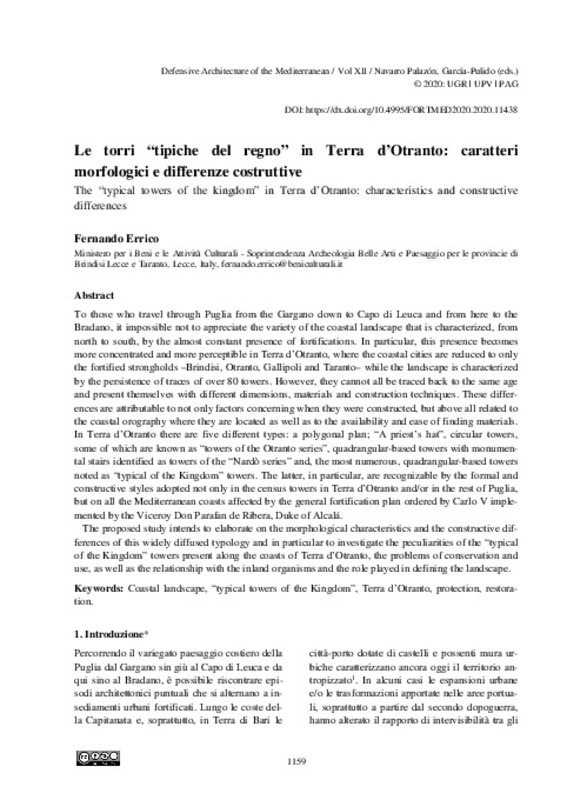JavaScript is disabled for your browser. Some features of this site may not work without it.
Buscar en RiuNet
Listar
Mi cuenta
Estadísticas
Ayuda RiuNet
Admin. UPV
Le torri “tipiche del regno” in Terra d’Otranto: caratteri morfologici e differenze costruttive
Mostrar el registro completo del ítem
Errico, F. (2020). Le torri “tipiche del regno” in Terra d’Otranto: caratteri morfologici e differenze costruttive. Editorial Universitat Politècnica de València. 1159-1166. https://doi.org/10.4995/FORTMED2020.2020.11438
Por favor, use este identificador para citar o enlazar este ítem: http://hdl.handle.net/10251/147362
Ficheros en el ítem
Metadatos del ítem
| Título: | Le torri “tipiche del regno” in Terra d’Otranto: caratteri morfologici e differenze costruttive | |
| Otro titulo: |
|
|
| Autor: | Errico, Fernando | |
| Fecha difusión: |
|
|
| Resumen: |
[EN] To those who travel through Puglia from the Gargano down to Capo di Leuca and from here to the
Bradano, it impossible not to appreciate the variety of the coastal landscape that is characterized, from
north to south, ...[+]
|
|
| Palabras clave: |
|
|
| Derechos de uso: | Reconocimiento - No comercial - Sin obra derivada (by-nc-nd) | |
| ISBN: |
|
|
| DOI: |
|
|
| Editorial: |
|
|
| Versión del editor: | http://ocs.editorial.upv.es/index.php/FORTMED/FORTMED2020/paper/view/11438 | |
| Título del congreso: |
|
|
| Lugar del congreso: |
|
|
| Fecha congreso: |
|
|
| Tipo: |
|








